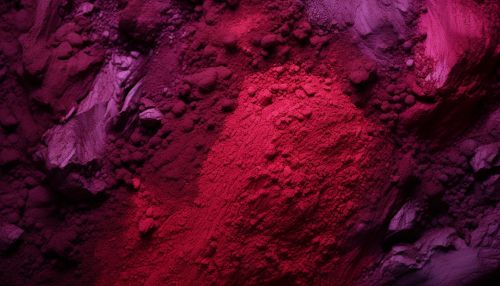Porfimer sodium
Introduction
Porfimer sodium, also known as Photofrin, is a photosensitizing agent used in photodynamic therapy (PDT) to treat various types of cancer. It is a complex mixture of oligomers formed by ether and ester linkages of up to eight porphyrin units.
Chemical Structure and Properties
Porfimer sodium is a dark red to purple lyophilized powder. It is soluble in water and has a molecular weight of approximately 1200 Da. The chemical formula of porfimer sodium is C₆₇H₇₈N₁₄O₂₀Na₄. The compound contains four sodium ions and has a net charge of -4. The porphyrin ring system in porfimer sodium absorbs light in the red region of the spectrum, specifically at a wavelength of 630 nm. This property is crucial for its use in photodynamic therapy.


Mechanism of Action
Porfimer sodium, when activated by light, induces a series of events that lead to localized tumor necrosis. After administration, porfimer sodium is preferentially retained in tumor tissues. When exposed to light at a specific wavelength, the drug becomes activated and transfers energy to molecular oxygen, forming reactive oxygen species (ROS). These ROS, including singlet oxygen and other radicals, can cause direct cytotoxicity, vascular shutdown, and an inflammatory response leading to cell death.
Uses in Medicine
Porfimer sodium is primarily used in photodynamic therapy for the treatment of various types of cancer, including esophageal cancer and non-small cell lung cancer. It has also been used off-label for the treatment of high-grade dysplasia in Barrett's esophagus, cholangiocarcinoma, and other malignancies.
Clinical Studies
Several clinical studies have demonstrated the efficacy of porfimer sodium in the treatment of esophageal and lung cancer. These studies have shown that PDT with porfimer sodium can effectively palliate dysphagia and improve the quality of life in patients with advanced esophageal cancer. In non-small cell lung cancer, PDT with porfimer sodium has been shown to effectively ablate early-stage tumors and improve survival rates.
Side Effects
The most common side effect of porfimer sodium is photosensitivity, which can last for several weeks after administration. Other side effects can include skin reactions, nausea, vomiting, and constipation. Rare but serious side effects can include respiratory distress, esophageal strictures, and hemorrhage.
Contraindications and Precautions
Porfimer sodium is contraindicated in patients with porphyria, as it can exacerbate the condition. It should also be used with caution in patients with liver disease, as the drug is primarily metabolized in the liver.
